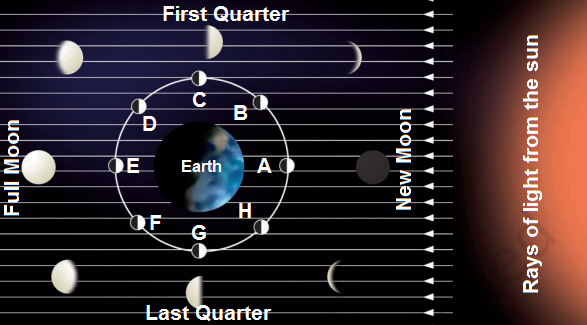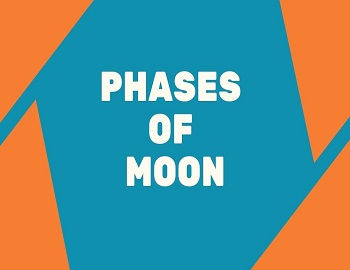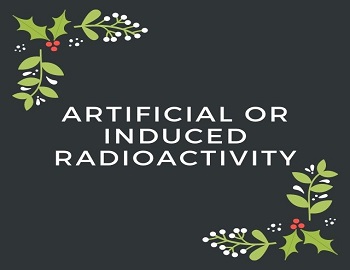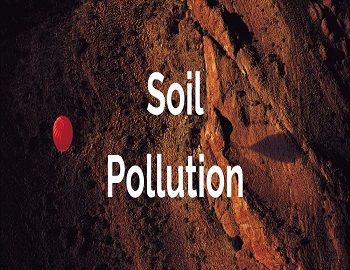Phases of Moon:
There are only two reasons why an object can be seen. Either the object gives out its own light, or the object reflects light that is reaching it from another source. In the case of moon, we can see it only because it reflects light from the sun.
The moon is our closest neighbour in space. Just as the earth circles around the sun, the moon revolves around the earth. As its position changes from day to day, the amount of the lighted surface of the moon that can be seen from the earth will vary.
The different appearances or shapes of the moon are called the moon’s phases. The moon goes through the same phases month after month. It only makes one rotation a month. It turns once on it axis in exactly the same time that it takes to make a complete revolution around the earth. As the moon travels around the earth we are able to see only that part of the moon that is lighted by the sun and it’s towards the earth. This produces a cycle of lunar phases as shown in the figure. These are marked A, B, C……..H in the figure.

The different phases of moon are-
| New Moon- In this position moon facing the earth does not receive any light and it appears dark. These phases of the moon are called the new moon or Amavasya. On the new moon night, the moon is not visible. |
| Full Moon- In this position moon is fully visible and it is in the form of a disc. This is called the full moon or Purnima. Between the new moon and full moon. there is a time interval of 14 days. |
The circular path of the moon is divided into four quarters. After new moon position, the size of the moon seems to go on increasing. Actually, we are seeing more of the lighted surface of the moon each night until we see the full moon. Early in the first quarter, we see a thin, crescent-shaped moon (See B in the figure). The crescent moon is not always in the same position. After the full moon, it seems to decrease in size. We continue to see less and less of its lighted surface until it comes again to a position between the earth and the sun. This is once more the dark of the moon. The period (14 nights) of an apparent decrease in size is called the waning of the moon. The actual time from full moon to full moon is 29.5 days.
Sometimes as you look at the crescent moon you can also see the dim outline of the rest of the moon. This is caused by the earth’s light, lighting the moon very dimly. Crescent is that portion of the moon that is illuminated by sunlight.









Comments (No)